The Art of Japanese Gardens
The
Japanese art of gardening is an ancient one. It involves the careful planting
of each flower, bush, and tree to achieve a medium between natural and
orderly. These gardens are meticulously maintained and often contain ponds
& Zen gardens. Join me on a trip through 25 of the most beautiful gardens
in Japan:
|
|
Chion-in
The
gardens of a Buddhist temple built in 1234, located in Kyoto. The temple was
built in memory of Hōnen, a Buddhist teacher.
|
 |
|
Entsūji
In the
northern part of Kyoto, you’ll find Entsuji temple. Established in 1678 by
Emperor Reigen, who had an affinity for gardens. The garden itself has over
50 species of Camellia (of which tea is made).
|
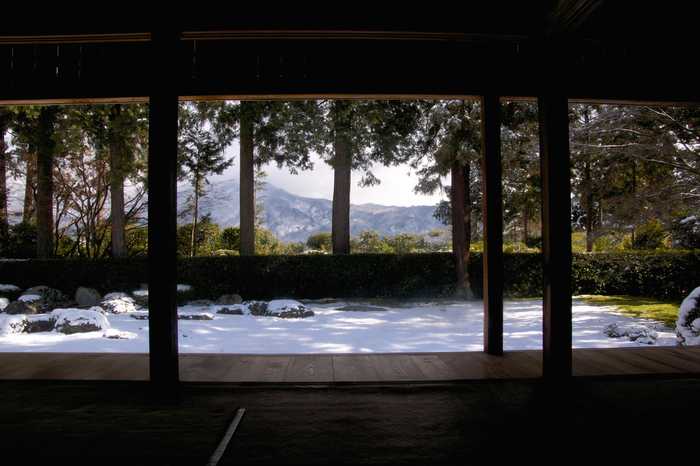 |
|
Giō-ji
Gio-ji is
a quiet temple, surrounded by trees and a lush moss garden. The temple is
named after Gio, a dancer from 12th-century Japan, who fell in
love with a powerful leader, but when he ended their relationship, she became
a Buddhist priestess.
|
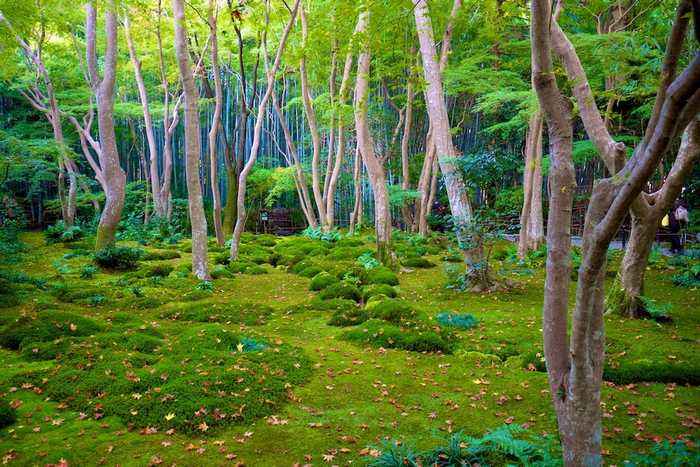 |
|
Happō-en
Built in
the early 17th century along the hills of the Edo region.
With a beautiful stream running through it, it houses many bonsai trees, most
of whom are over 100 years old, with one being over 500 years old.
|
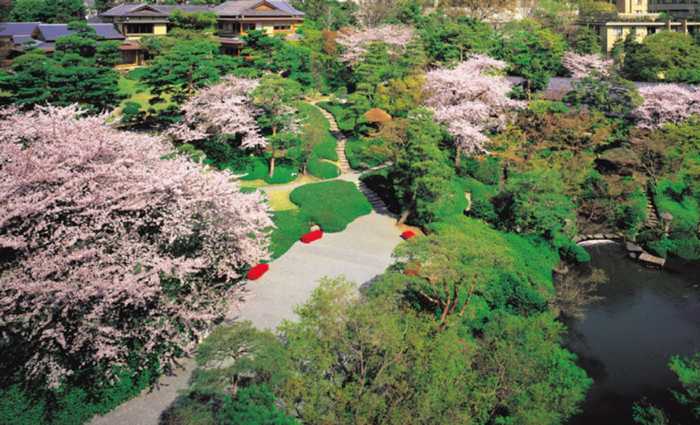 |
|
Hase-dera
Hase-Dera
is an ancient Buddhist temple, originally built in 686 C.E. in honor of
emperor Temmu. The temple has been burnt and rebuilt 10 times throughout
history. Nowadays, it is a favorite tourism spot, and the place is usually
filled with visitors.
|
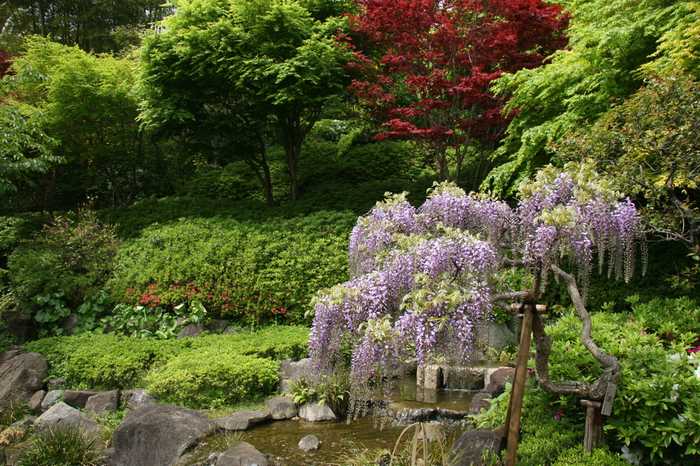 |
|
Hōsen-in
A temple
of the school of Zen Buddhism, Hosen-in is one of the older temples in the
region. Constructed in 1012, it houses an amazing garden, where visitors are
invited to sit and contemplate while sipping on green tea provided by the
monks.
|
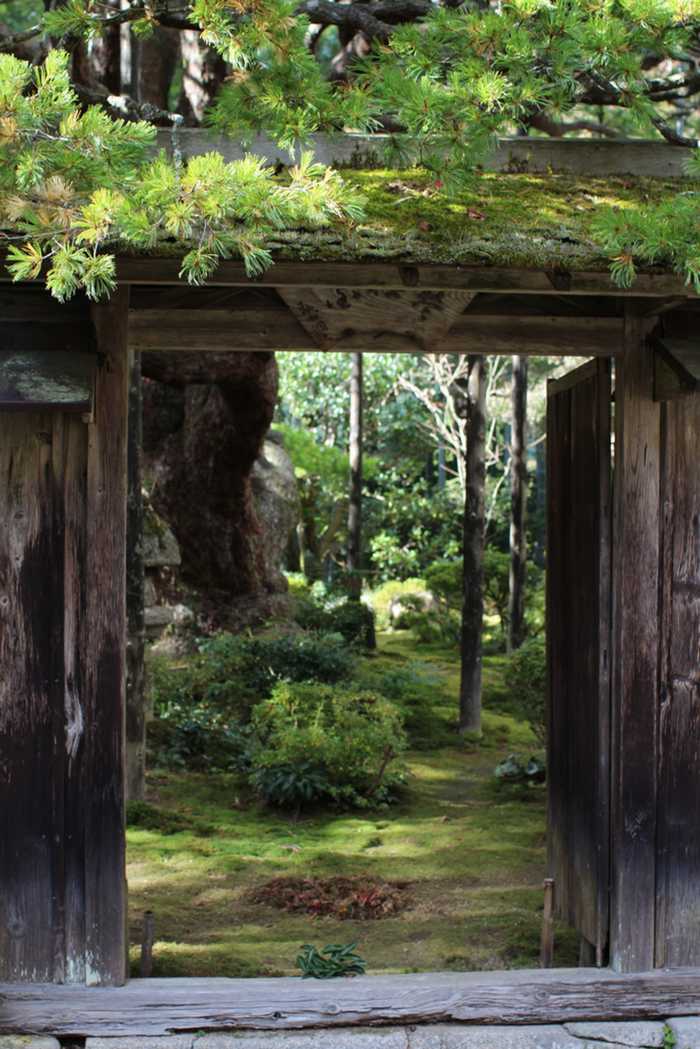 |
|
Jōmyō-ji
The temple
was founded in 1188 and is dedicated to Zen Buddhism. The magnificent Zen
garden is overlooked by a tea house, allowing visitors a relaxing cup of tea
as they sit and contemplate.
|
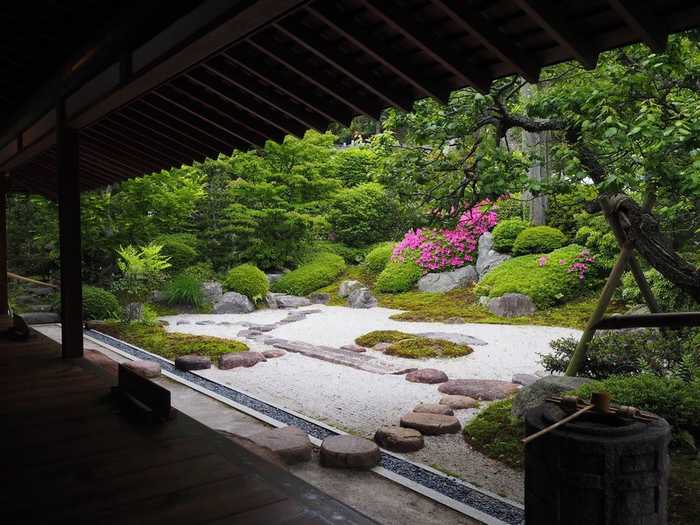 |
|
Jōruri-ji
The garden
is part of a Buddhist temple, built in 1047. The temple is located by a pond
representing the ocean, which separates life and death. It is one of the last
of the Paradise Gardens from the Heian period.
|
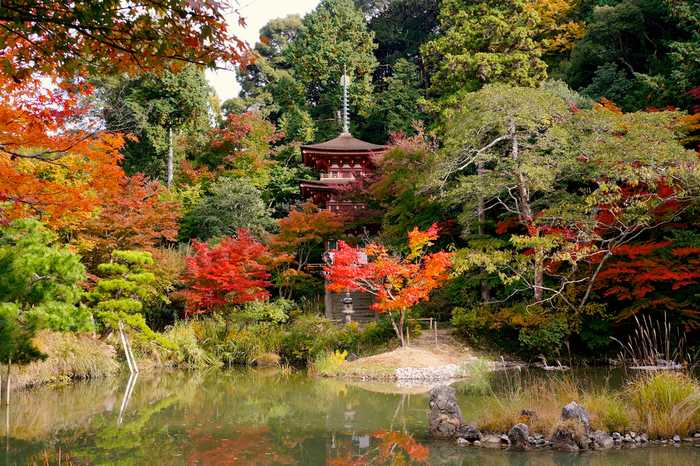 |
|
Kajū-ji
After the
death of his mother in 900 C.E., emperor Daigo built this temple in her
memory. In the midst of its garden lies a pond filled with water-lilies. It
is said that the pond used to be sailed upon by poem-writers, though today
you may only stroll alongside it.
|
 |
|
Kennin-ji
Zen was
introduced to Japan by the monk Eisai, who is now buried in the grounds of
this temple. Founded in 1202, it’s considered one of the most important Zen
temples in Kyoto.
|
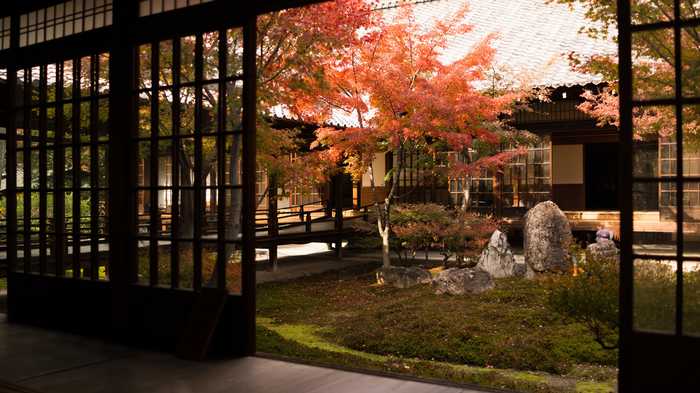 |
|
Kiyosumi Teien
Covering
81,000 square meters (50 square miles), these gardens were built by the
founder of Mitsubishi for the enjoyment of his employees. The gardens
surround a lake that serves as the focal point of the gardens. There are 3
islands in the lake, with a teahouse on one.
|
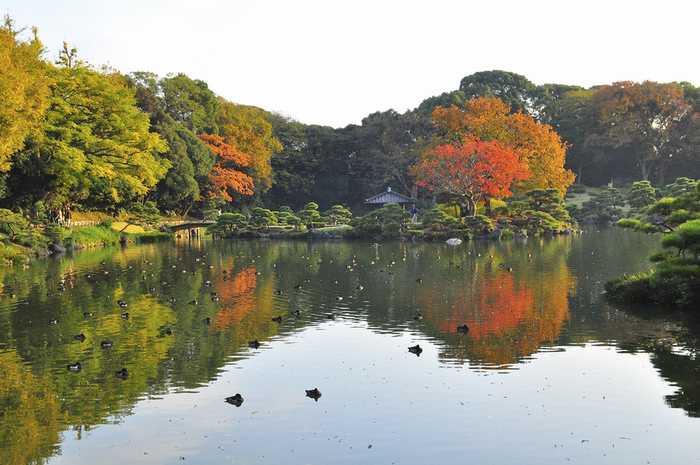 |
|
Kyū-Furukawa
Teien
Located in
Tokyo, the gardens house Japanese maples that turn bright red in the fall,
and a rose garden that produces spectacular flowers.
|
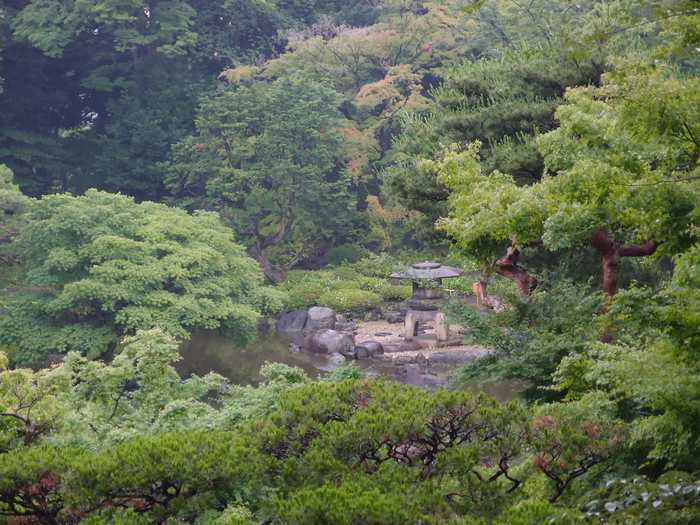 |
|
Mirei Shigemori
Garden Museum
Originally
a traditional house from the Japanese Edo period(the end of the 18th century),
the Shigemori house is now a garden museum.
|
 |
|
Mukōjima-Hyakkaen
This
flower garden is located in Tokyo and is not a traditional Japanese garden.
It has one surviving flower garden from the Edo period. Mukōjimacomes
from the region’s old name and Hyakkaen was
chosen to mean "a garden with a hundred flowers that bloom throughout
the four seasons".
|
 |
|
Namikawa
Cloisonne Museum
This small
garden was once the home of one of Japan’s most loved artists – Namikawa. It
has been preserved and kept in its original state. Not known to many, the
garden, while not large, is quite magical.
|
 |
|
Nezu Museum
Opened in
1940, this museum was severely damaged the by the allies’ bombing of Tokyo in
1945. It was renovated after the war, and the garden now is back to full
glory. Containing 2 ponds, which are connected by small streams, you’ll also
find teahouses and a beautiful garden lantern.
|
 |
|
Ninna-ji
Ninna-ji
is the head temple of Shingon Buddhism in Japan. It was founded in 888 C.E.
by emperor Uda and is part of the historical monuments of ancient Kyoto – a
UNESCO world heritage site.
|
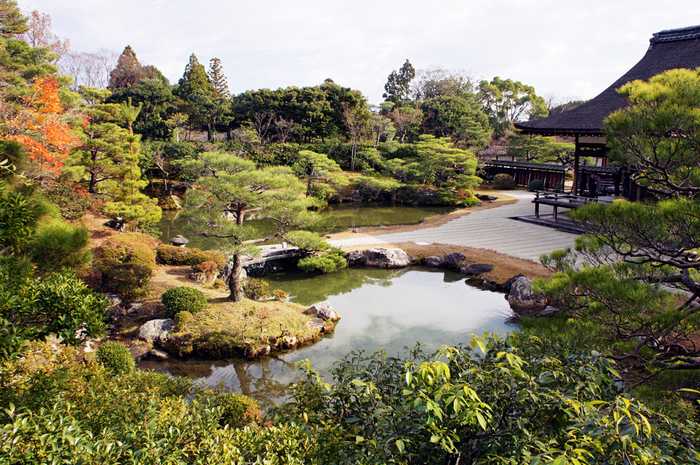 |
|
Reiun-in
These
470-years-old gardens belong to the Reiun-in temple of Zen Buddhism. The
gardens were neglected for many years until they were renovated and
redesigned in 1970 by renowned Japanese artist Shigemori Mirei.
|
 |
|
Sanzen-in
The rural
town of Ohara hides this tranquil moss garden and its stone statues. The
garden is part of the Sanzen-in temple, built at the end of the 10th century.
|
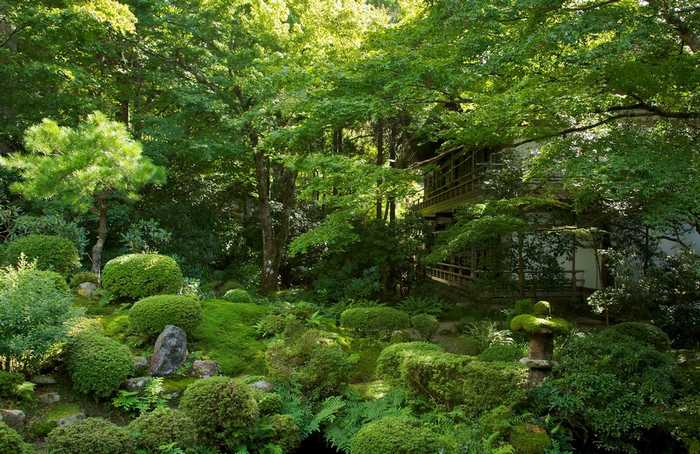 |
|
Shōsei-en
This
garden belongs to the Higashi-Hongan-ji temple in Kyoto. The gardens you see
in the picture were built in 1641 along with the original pond. The garden
houses several Cherry trees that serve as a huge attraction in spring, when
they bloom. Amazingly, this garden is located just a few meters away from the
busy Kyoto station.
|
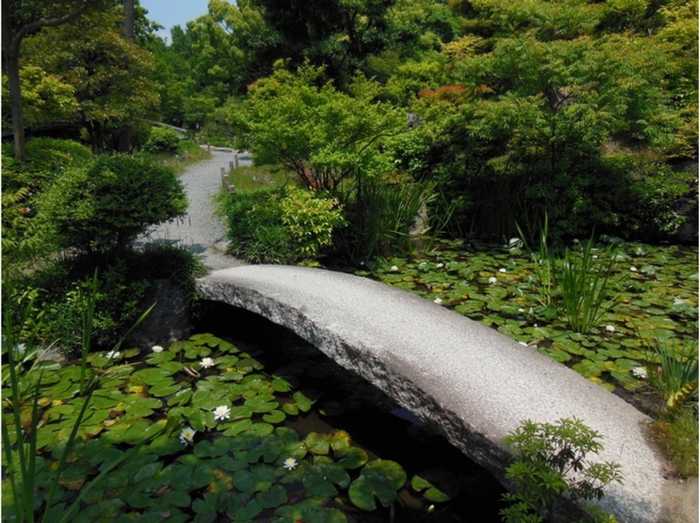 |
|
Taizō-in
This is
the newer garden of the Taizō-in temple, called yoko-en,
built in 1963. The garden has several azaleas, along with a stream that
cascades and flows into the pond, creating a spectacular view.
|
 |
|
Tōji-in
In 1341,
emperor Takauji chose this spot, at the foot of Mount Kinugasa, to erect a
temple on. This was the fulfillment of a vow he took while following the Zen
teachings of Musō Soseki. Soseki also designed the gardens, pond and the
tearoom.
|
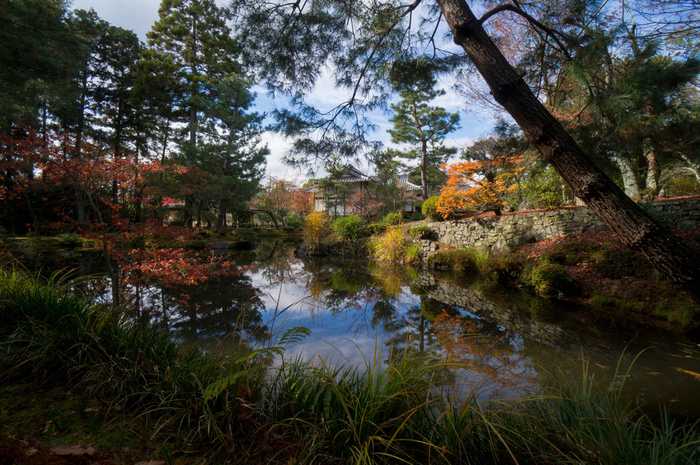 |
|
Tokyo Imperial
Palace Ninomaru Gardens |
 |
|
Tokyo National
Museum
The
Imperial Palace is the residence of the emperor of Japan, located in Tokyo.
These breathtaking gardens are only open on the emperor’s birthday and on the
first day of the new year.
|
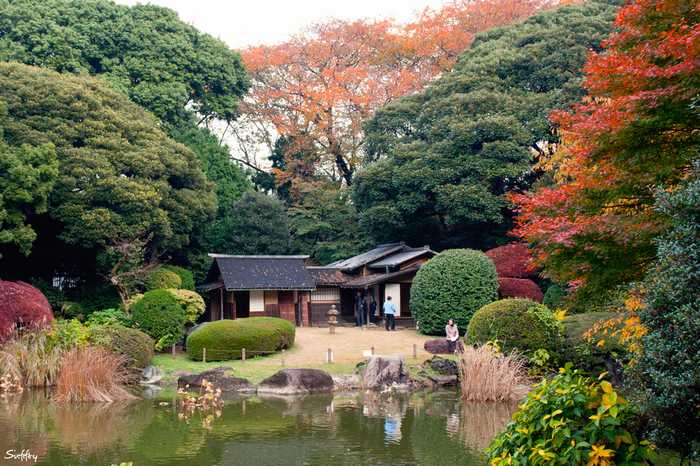 |
|
Tonogayato Teien
Built
between 1913 and 1915, these are the gardens of the estate of Eguchi Teijo,
the Vice-President of the Manchurian Railway. They were later purchased by
the director of Mitsubishi, who completed it and added a teahouse. The
gardens are built in the traditional Japanese style and have been
purchased by the Tokyo Metropolitan Government for preservation and public
enjoyment.
|
 |
Thursday, November 13, 2014
The Art of Japanese Gardens
Subscribe to:
Post Comments (Atom)



No comments:
Post a Comment